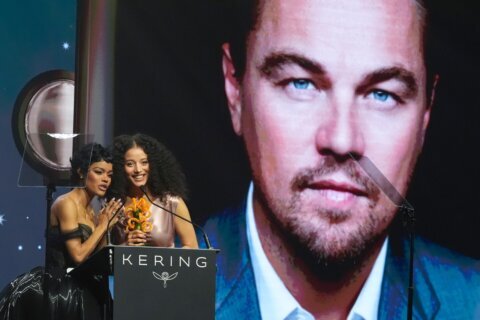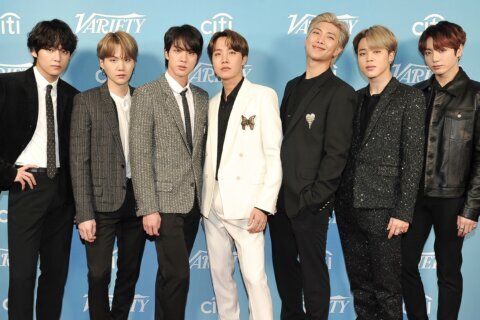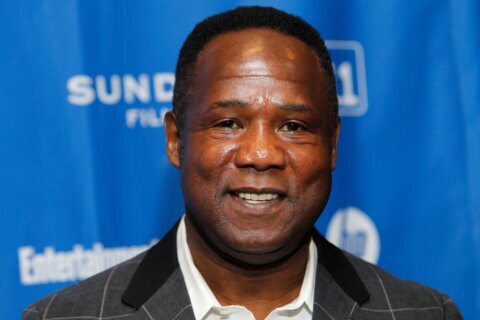
He saved Disney Animation from shutting down, before founding its rival DreamWorks.
Now, Jeffrey Katzenberg is a week into his new mobile streaming app called Quibi, which saw 300,000 subscribers on its launch day and 830,000 subscribers in just three days.
“Quibi is a super premium subscription service only for your phone with tons of new original content made by the very best talents in Hollywood,” Katzenberg told WTOP. “[It] uses a brand new technology that makes shooting content for the telephone look beautiful, [featuring] full-screen video whether you’re holding your phone vertically or horizontally.”
What’s in a name? There actually wasn’t much quibbling over calling it “Quibi.”
“You take the words ‘quick’ and ‘bite’ and you compress them together, you get ‘Quibi,'” Katzenberg said. “Of all the hard things we had to do, this one was actually pretty easy.”
The target audience is ages 18 to 44, but specifically millennials ages 25 to 35.
“I’ve actually been quite enamored and entertained by the stuff I’ve been able to watch on my phone, whether it was YouTube, Snapchat, Instagram TV or TikTok,” Katzenberg said. “I come out of more traditional Hollywood storytelling, so the ‘aha’ moment for me was: what if we could bring our form of storytelling to this new form of watching?”
Together with former eBay and Hewlett-Packard C.E.O. Meg Whitman, Katzenberg has raised $1.75 billion from investors like Warner Bros., NBCUniversal, Disney, BBC Studios, Lionsgate and MGM. Its first-year content budget is a whopping $1.1 billion, with the most expensive shows costing up to $100,000 per minute and $6 million per hour to produce.
The first year will feature 7,000 pieces of original content, each under 10 minutes.
“We have the best talent in Hollywood making content for us: Jennifer Lopez, Will Smith, LeBron James, Reese Witherspoon, Chrissy Teigen, Chance the Rapper doing a new version of ‘Punk’d,’ Steven Spielberg, Guillermo del Toro, Kevin Hart,” Katzenberg said. “500 original episodes, 50 series of all different types, there are movies with chapters.”
This includes a remake of “The Fugitive” starring Kiefer Sutherland and Boyd Holbrook.
“It’s that same concept of an innocent accused of a crime they didn’t commit,” Katzenberg said. “It’s told in 14 chapters between six and 10 minutes long. … Each chapter ends on a cliffhanger [and] over the course of those 14 chapters, it’s like a two-hour movie.”
Rather than binging for hours, Katzenberg expects folks will watch in short snippets.
“This is about filling those in-between moments that you have during your day,” Katzenberg said. “If you’re going to sit down and watch an hour or two-hour show, you tend to do that on a TV or laptop at night or on the weekend. This is meant for all those in-between moments … homeschooling our kids, doing chores, or office work working from home.”
We all have more of those in-between moments lately due to the “shelter in place” orders to combat the spread of coronavirus. Katzenberg is himself taking the shutdown seriously.
“Like everyone else, I’ve been sheltered in place, just my wife and I together hunkered down,” Katzenberg said. “I’ve been working super hard, so it’s been a nice distraction, to be honest. It’s challenging times for everybody and all of us each in our own way.”
He debated delaying the Quibi launch but realized now is the perfect time, with folks at home streaming. Katzenberg is hoping to boost spirits by making the app free for the next 90 days before subscriptions kick in at $4.99 per month or $7.99 for ad-free service.
“In this distressed moment in time, here’s a little escape and something that will maybe bring some laughter, happiness and joy,” Katzenberg said. “We decided to keep on our path and launch now, but rather than asking people to pay for something at a time in which they’ve probably got other priorities, we decided to make this available to everybody free.”
Quibi is just the latest example of Katzenberg’s run as an entertainment “renaissance man.” He launched the so-called “Disney Renaissance” as the head of Disney Animation from 1984-1994, saving the department from shuttering by infusing musical numbers.
“The studio was in pretty dire shape when Michael Eisner and I showed up there in 1984,” Katzenberg said. “They really hadn’t had much success in animation. They hadn’t made many and the ones they were making actually were not among the best.”
So, Katzenberg looked back to Walt Disney’s example from decades before.
“My thing was just to return back to the roots of the company and to the founder and the entrepreneur that created animated movies, which was Walt,” Katzenberg said. “It took us a while, but we found our groove, you know, ‘The Little Mermaid,’ ‘Roger Rabbit,’ ‘Beauty and the Beast,’ ‘Aladdin,’ ‘Lion King’ and the spring of movies that came out of that.”
In 1994, Katzenberg left Disney to create the rival company DreamWorks.
“Being in partnership with Steven Spielberg and David Geffen was a dream come true,” Katzenberg said. “I spent a decade at Disney, then two decades at DreamWorks and had a lot of fun making ‘Shrek,’ ‘Kung Fu Panda’ and ‘How to Train Your Dragon.’ … But that chapter came to an end and I wanted to start over. … Quibi is the next big opportunity.”
Indeed, Katzenberg seems to derive more joy discussing the future than the past.
“I hope you and I can have a conversation 10 years from now and you’ll be as entertained and inspired by the creativity and uniqueness of what we’re going to do in the next 10 years as those 10 years at Disney or 20 years at DreamWorks,” Katzenberg said.
“I’m so much more interested in what’s in front of me than what’s behind me.”








